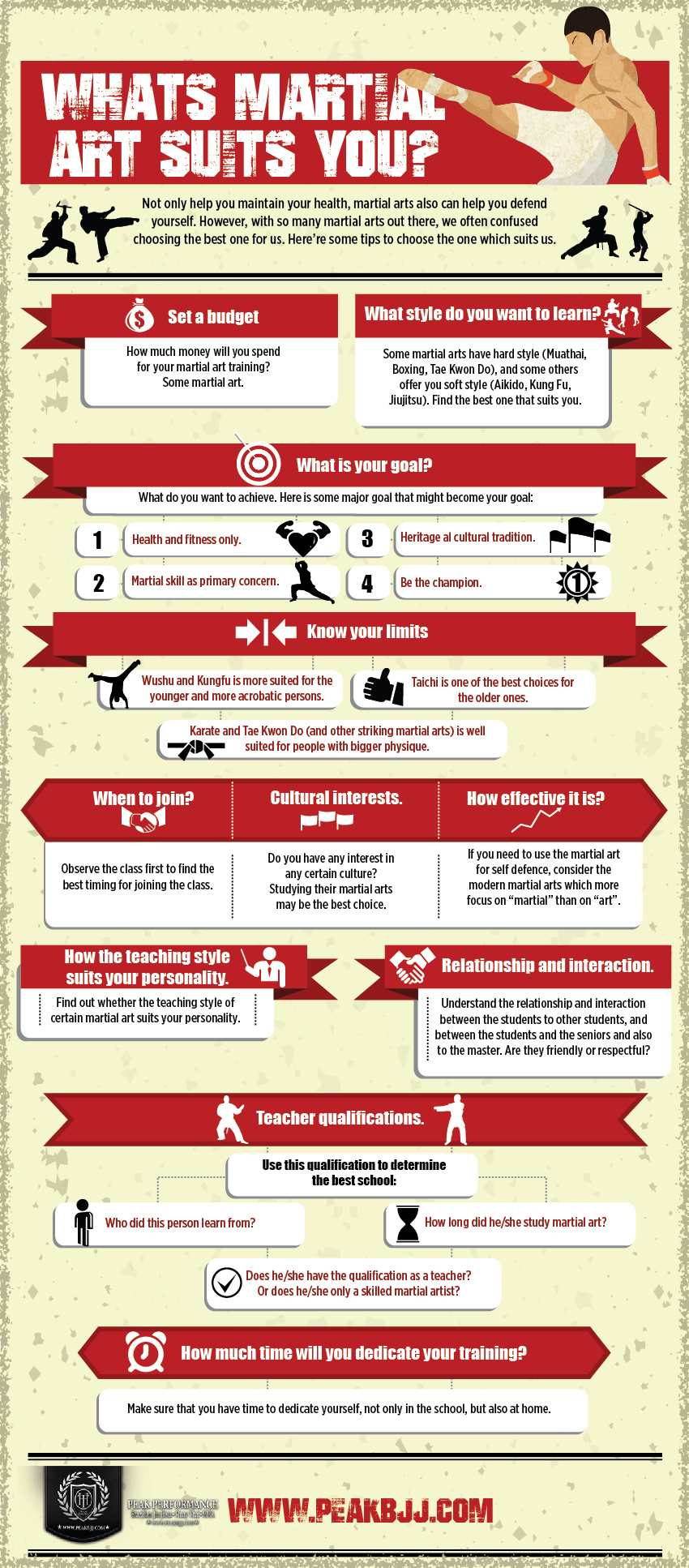Striking The Best Stability In Between Swiftness And Precision In Fighting Styles Instruction
Striking The Best Stability In Between Swiftness And Precision In Fighting Styles Instruction
Blog Article
kick boxing for adults Develop By-Kendall Zimmerman
Imagine you're standing beside a tightrope, all set to take your first step. As you collect your emphasis, you understand that this fragile balancing act is not so different from the globe of fighting styles.
In martial arts training, locating the ideal equilibrium of speed and precision is crucial for success. Yet exactly how do you strike that perfect balance? It's a concern that has actually fascinated specialists for centuries, and in this discussion, we will discover the relevance of speed and precision, discover training methods to achieve equilibrium, and take on the typical difficulties that develop along the way.
Prepare to uncover the keys that will certainly elevate your fighting styles trip to new heights.
The Relevance of Speed and Accuracy
When it involves martial arts training, rate and precision are vital elements that can make all the distinction in your efficiency. Attaining the best balance between rate and precision is crucial for reliable martial arts strategies.
https://edwinuaflq.bloggip.com/33914070/encouraging-personal-defense-the-art-of-self-defense-reflexes-and-recognition-enhancement-through-educating permits you to react swiftly to your opponent's motions, providing you a benefit in battle. It allows you to implement strikes and blocks swiftly, capturing your challenger unsuspecting.
On the other hand, accuracy ensures that your strategies land precisely and with maximum impact. It enables you to hit the target with precision, boosting the performance of your strikes.
Training Strategies for Attaining Balance
To create the appropriate equilibrium between speed and precision in your martial arts training, it's crucial to carry out effective techniques that enhance your efficiency.
One training strategy is to focus on specific methods and drills that target both speed and accuracy. By practicing Krav Maga -speed movements with accuracy and control, you can boost your general efficiency.
One more technique is to include interval training, rotating in between high-intensity bursts of speed and durations of remainder or slower activities. This aids build endurance and agility while also allowing you to adjust your accuracy.
Furthermore, exercising mindfulness and mental visualization can boost your balance by educating your mind to focus on both rate and accuracy all at once.
Common Obstacles and Just How to Get over Them
One typical challenge in martial arts training is keeping an equilibrium between rate and precision, but it can be gotten over with regular practice and emphasis. Right here are a couple of suggestions to help you conquer this challenge:
- Concentrate on proper strategy: Take the time to discover and master the right type and method for every relocation. This will aid you develop accuracy and precision in your strikes and motions.
- Slowly enhance speed: Beginning by exercising slowly and gradually boost your rate as you end up being a lot more comfy with the method. This will assist you preserve control and accuracy while carrying out steps at a much faster speed.
- Technique timing and reaction drills: Include drills that concentrate on timing and responding to your opponent's motions. how to find good martial art studio for kids will certainly enhance your capability to strike with speed and accuracy in an actual combat situation.
Final thought
As you end your martial arts training, you have actually found the fragile balance of rate and accuracy. By concentrating on both elements, you have actually acquired the capacity to execute flawless techniques with lightning-fast rate.
It's no coincidence that your devotion and determination have led you to this level of mastery. Accept this newfound balance, and continue to refine your skills, recognizing that speed and precision are the key to coming to be an exceptional martial artist.
